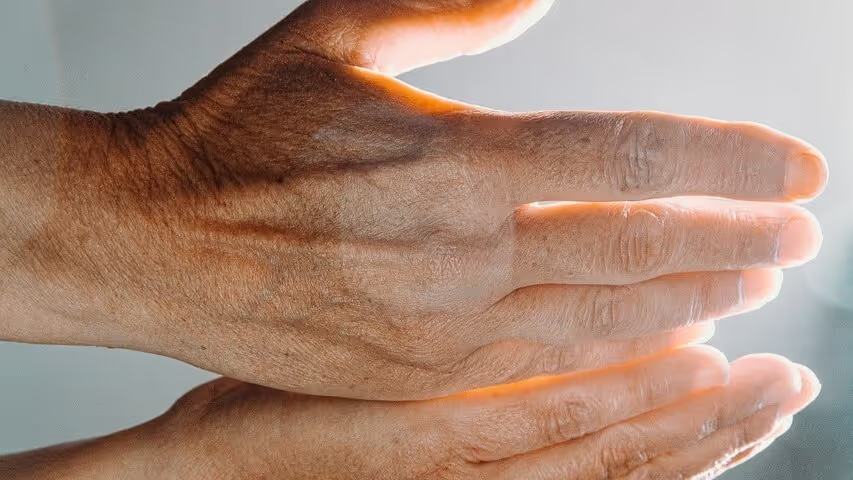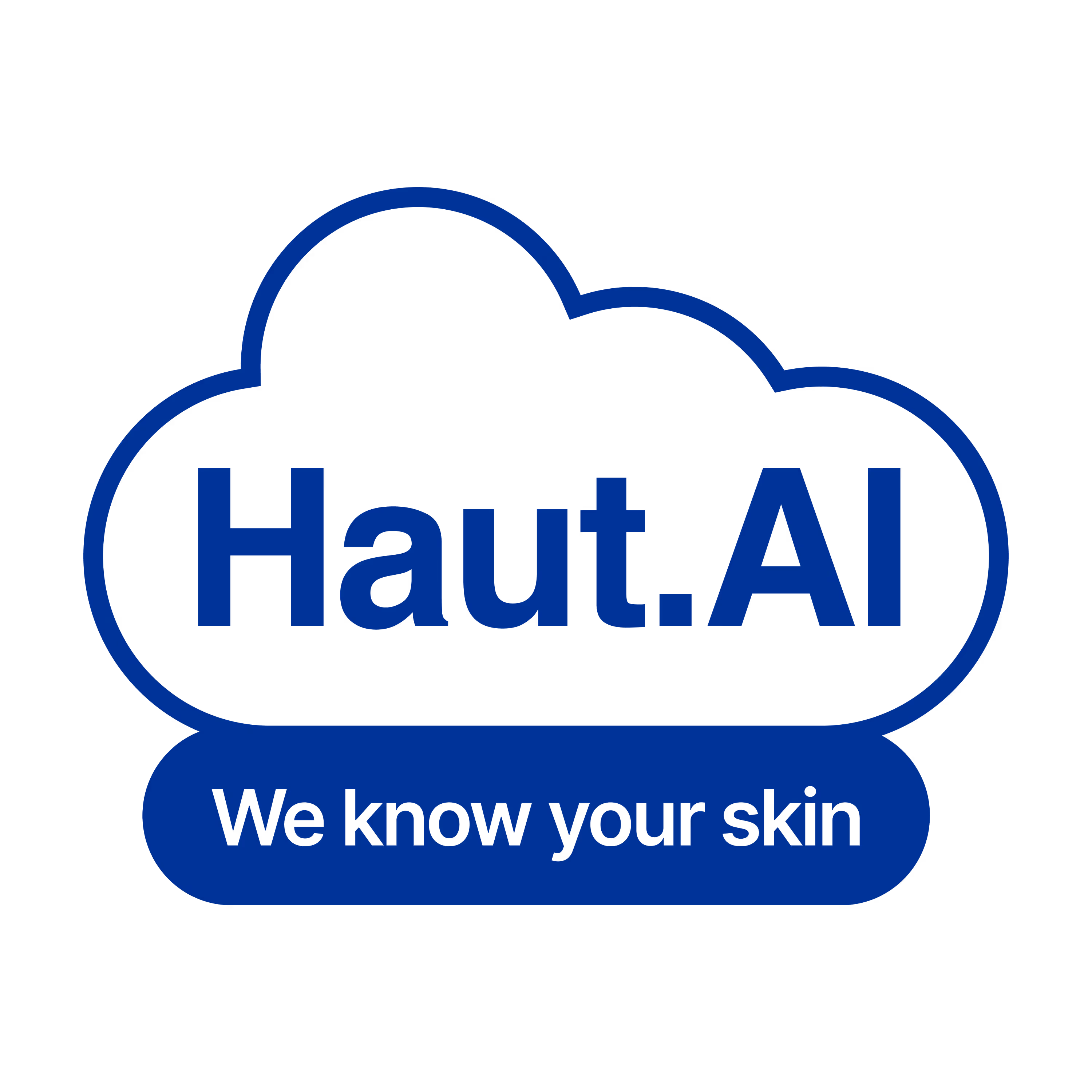
Haut.AI gifts 1-month free trial of Skin.Chat ->
Haut.AI gifts 1-month free trial of Skin.Chat ->





Anastasia Georgievskaya, CEO of Haut.AI, discusses the science behind accurate age prediction with Haut.AI’s pioneering HandAge model.
Age may seem like a simple metric of time on its surface, yet decades of scientific research have been dedicated to decoding the clues time leaves behind on our bodies.This pursuit of accurate age estimation has driven innovation across multiple industries in skincare, healthcare and digital mediums. Today’s inception of artificial intelligence has brought us to the precipice of a new era in age prediction. Haut.AI’s latest scientific development, the HandAge model, breaks down barriers in age prediction.
The face is a canvas of our human experiences, and artists and scientists alike have long our uppermost profile to showcase and define them. In the field of age recognition, this fascination has become instinctive–a bias noticeably reflected in today’s continued development of age-recognition technology. Faces are our primary social interface and we’ve become remarkably proficient at reading age from facial cues.
We’ve been utilizing age recognition systems since the early ‘90s. These young designs were inspired by human perception, and they focused on analyzing observable signs of aging on the face with limited accuracy. But even with significant advancements in modern technology, the focus of age recognition largely remains on AI facial analysis. State-of-the-art models, such as FaceNet, DeepFace and PhotoAgeClock have become incredibly skillful at detecting subtle, age-related changes, from the deepening of nasolabial folds to drops in skin elasticity. However, this continued emphasis on facial characteristics ignores a wealth of age-related information that reside in other parts of the human body.
Our hands hold a wealth of overlooked information in age prediction. This is the fundamental premise behind Haut.AI's groundbreaking HandAge model, a technology that challenges the conventional wisdom of age prediction by turning its attention to this information-rich body part steeped in human experience.
HandAge is an artificial intelligence (AI) system designed to predict a person’s chronological age using images of their hands, specifically the dorsal side. The HandAge model leverages deep learning techniques, particularly convolutional neural networks (CNNs) and a unique set of biological markers. To predict age accurately, HandAge examines creases over joints, knuckles, phalanges, the zone of metacarpal bones and other characteristics unique to our hands.
AI's ability to predict age stems from its proficiency in analyzing immense amounts of data and identifying patterns often imperceptible to the human eye. Our models are trained on large datasets that learn to identify patterns and features correlated with age. The process involves feeding the AI numerous images of people at different ages, allowing it to learn from variations and nuances in these images.
The HandAge AI becomes adept at predicting the age of new images it encounters with remarkable accuracy. Deep learning mimics our brain's neural networks, but with the added ability to process vast amounts of data at remarkable speeds.
HandAge was trained using images of over 1400 Indian women living in Mumbai, New Delhi and Bangalore. These women represent a wide range of ages and skin tones, ensuring Haut.Ai’s HandAge technology will accurately assess age across diverse populations.
Our team tested HandAge’s prediction accuracy using a similar facial-image model for age prediction. Photos from the same group of women were analyzed to ensure consistent data. This study found that both hand and face models were extremely solid at predicting age.
On average, the face model accurately estimated within 4.1 years of the actual age of a subject, while the hand model was within 4.7 years. This showed us that hand-based age assessments are similarly reliable to facial assessments.
A unique aspect of the HandAge model is its ability to differentiate between intrinsic and extrinsic aging factors. Intrinsic aging refers to the natural aging process driven by genetics, while extrinsic aging is influenced by environmental factors such as sun exposure and lifestyle. By analyzing specific markers on human hands, HandAge provides insights into both types of aging, offering a comprehensive assessment of an individual’s age. HandAge's training on diverse skin types means it's ready to accurately predict age for everyone, a crucial factor often neglected or limited in many modern models.
Privacy concerns have risen in the last few decades, with good reason, alongside the ever-increasing integration of technology in our lives. This spread of digital devices, social media platforms and online services brings us an upward and organic trend of personal awareness in the importance of protecting our private data. HandAge’s model of age recognition protects user privacy by analyzing users without profiling them facially.
Exploring avenues for recognition systems that don’t rely on facial analysis is imperative to safeguarding users’ data. Haut.AI`s research has shown that today we can use increasingly accurate methods for age prediction, accessing biomarkers on far fewer personal parts of our own bodies. By shifting the focus to an individual’s hands, innovations like HandAge limit the use of facial age prediction options for user privacy right from the beginning and expand the scope of age prediction technology beyond previously existing methods.
HandAge ushers in a pivotal breakthrough in age prediction, offering greater insights into aging and a nuanced understanding of how different body parts evolve over time–these bring both personal and educational value to future users of the HandAge model.
As an example, we’re envisioning that HandAge may help to highlight the common yet underestimated need for sun protection beyond the face. Sun exposure is a major contributing factor to premature aging and skin cancer, and the hands are frequently neglected. By showcasing the impact of UV rays on hand appearance, we can raise awareness and encourage sunscreen application.
By combining both hand and face image-data, we open up an entire new world of possibilities. The dual approach introduces the possibility of discovering more about how different body parts age over time. By studying the different skin features of both our hands and face, we can better understand how these areas are affected by natural aging processes, lifestyles and external factors.
This information will help us come up with better ways to stop or slow the signs of aging.
This goes beyond beauty factors. More importantly, this combined approach has the increased potential to detect health issues far earlier on. If the combined model identifies discrepancies between the aging patterns of an individual’s hands and face, it may indicate underlying health concerns that are worth further assessment.
This combined aspect adds an unignorable layer of diagnostic value to our age assessment technology.
While the potential of hand analysis to replace facial imagery is intriguing, the true power lies in their combined application. This pioneering approach offers a holistic understanding of the aging process, enhancing accuracy while limiting biases inherent in traditional facial recognition systems.
As the beauty industry explores this innovative paradigm, the horizon expands with possibilities for personalized skincare, targeted treatments and accessible health assessments.Haut.AI is exploring this combined approach to harbour our technology’s full potential.
Originally published in Cosmetics Business: https://cosmeticsbusiness.com/hands-age-prediction-haut-ai

